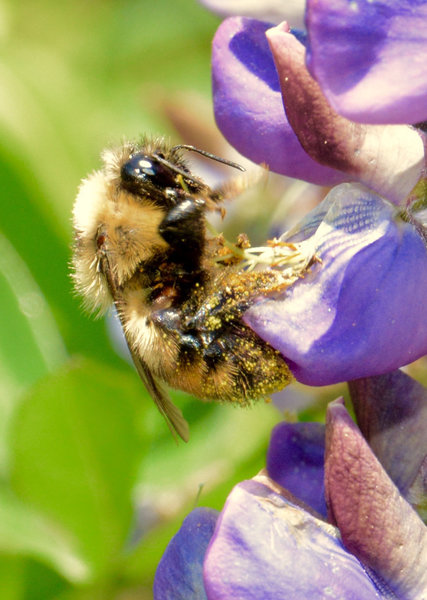Don’t Kill Bees Save Bees! Live Bee Removal La Quinta, we will help you remove on wanted bees please remember one of every three bites of food you eat depends on the honey bees! Proper Transportation of the Queen Bees is our number one priority and very important part of a live bee removal Call us Today 951-476-8495
Live Bee Removal in La Quinta is one our many cities we serve in same day!
Please enjoy our new article:
Climate Change Is Shrinking Where Bumblebees Range, Research Finds
Climate change has narrowed the range where bumblebees are found in North America and Europe in recent decades, according to a study published Thursday.
The paper, published in the journal Science, suggests that warming temperatures have caused bumblebee populations to retreat from the southern limits of their travels by as much as 190 miles since the 1970s.
Logic would suggest that the northern reaches of their home turf would shift to higher latitudes by a corresponding distance. But that has not happened, leading researchers to think that the more northern habitats may be less hospitable to them.
“Bumblebee species across Europe and North America are declining at continental scales,” Jeremy T. Kerr a conservation biologist at the University of Ottawa in Canada who was the lead author of the report, said at a news conference. “And our data suggest that climate change plays a leading, or perhaps the leading, role in this trend.”

The study says climate change has caused bumblebees to retreat from the southern limits of their travels. Credit Jeremy T. Kerr
Not all entomologists agree with the findings, saying that the paper offers evidence of a correlation between climate change and waning bumblebee population ranges, but does not make the case that warming temperatures are the main cause. Instead, they say that a multitude of factors contribute to the bumblebees’ shrinking borders, and that a changing climate may be just one factor.
For the study, the researchers constructed a database that contained more than 420,000 observations of 67 different European and North American bumblebee species, including when and where they were found. The museum records stretch back more than 110 years.
The researchers analyzed the observations along with climate information from every year from 1900 to 2010 in the regions and drew conclusions about how the northern and southern limits of different bumblebee species shifted over the past century.
They compared population changes from 1974 to 2010, when temperatures began to warm, with changes from 1901 to 1974, when human-caused climate change was less of a factor. They found that the southernmost range of bumblebees retreated north at a rate of about 3 miles per year (the precise latitude was different for the many species of bees they studied).
For example, Bombus affinis once buzzed as far south as Georgia, but now is only rarely seen in states like Illinois, Maine and Wisconsin, while Bombus terricola, which thrived in North Carolina and the Mid-Atlantic, is now mostly seen in parts of Maine, New Hampshire, Ontario and Quebec, according to Leif Richardson, an ecologist from the University of Vermont and a co-author of the paper.
“One of the most striking results was that trends were often indistinguishable between Europe and North America,” said Paul Galpern, a landscape ecologist from the University of Calgary and a co-author of the paper. “Bumblebee species are responding quite similarly across continents since climate change began to really accelerate from 1975.”
The findings did not entirely surprise Dave Goulson, a bee biologist at the University of Sussex in Britain who was not part of the study. He said in an email that he expected bees, which thrive in cooler climates, to be adversely affected by climate change, particularly in the southern tips of their range.
“What is more surprising,” he said, “is that they do not seem to be expanding northwards. Perhaps because suitable habitat is not available to the north of their existing ranges.” He called the study the first clear evidence that many species were shrinking across huge geographic scales.
Sydney Cameron, an entomology professor at the University of Illinois who specializes in bumblebee conservation, called the study “noteworthy” for its vast data set and expansive range, but disputed its findings.
“They are concluding the future is dire and that bumblebees won’t move north,” Dr. Cameron said. “That’s a surprising conclusion given the data.”
Climate change, she said, might be a factor in the potential shrinking of bumblebee ranges, but it is too early to say for certain. “It’s correlative, not causal; they cannot say that a two-degree climate change caused these patterns,” she added, referring to an approximate Celsius reading for changes across the regions.
Dr. Cameron also took issue with the paper’s suggestion that bumblebee population loss could be mitigated through interventions such as “assisted migration,” in which the populations are physically moved farther north. She called that an “impractical solution” because of the risk of species spreading pathogens.
The researchers also analyzed long-term data on habitat loss and pesticide use, including neonicotinoids that have been criticized by bee conservationists for flustering bees and causing them to forget how to buzz their way home.
“The question is, have neonicotinoids or habitat losses caused the huge range losses we observed in this study?” said Alana Pindar, a postdoctoral fellow at the University of Guelph and an author of the paper. “The answer for now is clearly ‘No.’”
She added that although these factors were known to harm bee populations, the study showed that climate change was the main reason behind the severe population shrinkage.
James Strange, an entomologist with the Department of Agriculture, did not agree with that assertion. “What they’ve shown is that climate change has at least some effects on the population changes of some bumblebee species,” Dr. Strange said. “But I did not come away convinced that climate change is causing these movements.”
He said he was worried this paper might cause people to blame climate change entirely for bee population destruction and ignore potential factors such as parasites, pesticides and habitat destruction. “There’s a bit of me that’s nervous someone will pick this up and say ‘They figured it out: It’s climate change,’ ” Dr. Strange said. “But really, we haven’t figured it out yet.”
Live Bee Removal helping La Quinta and many other cities to remove unwanted bees. call us today 951-476-8495

